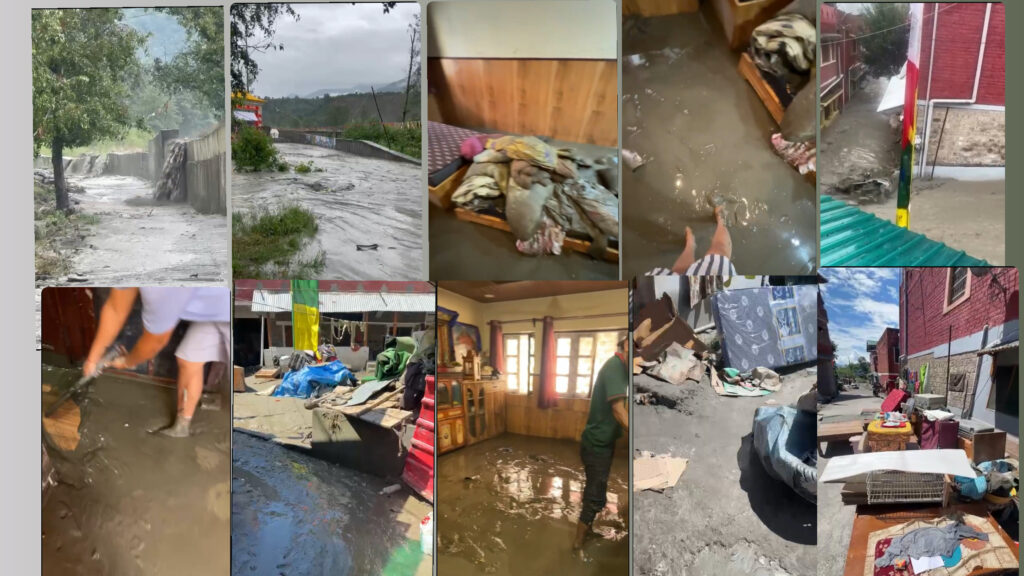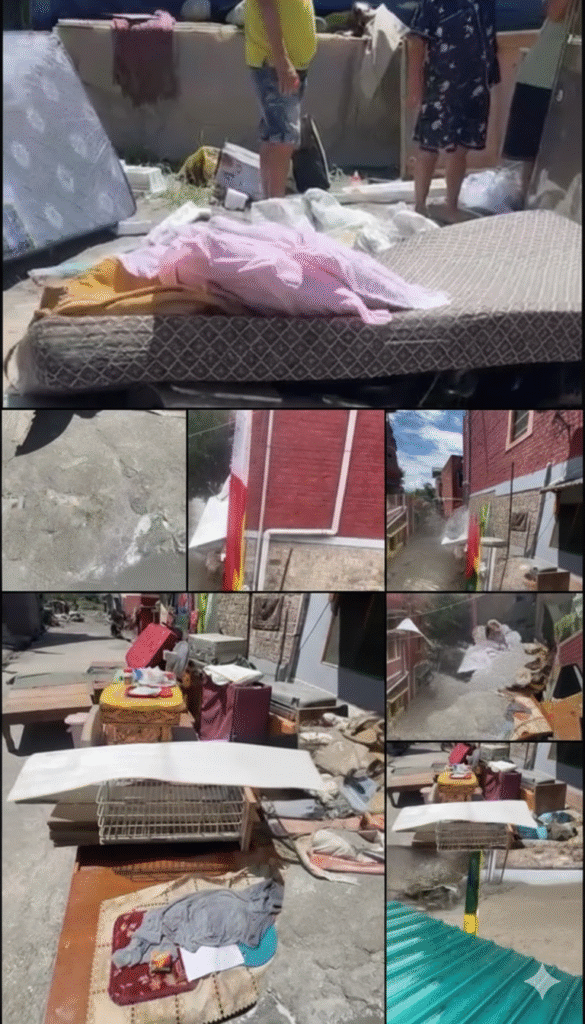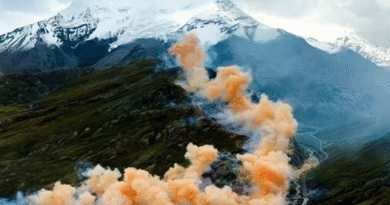Dhobi Tibetan Refugee Settlement Near Manali Hit by Flood After Cloudburst
By Tenzin Chokyi

DHARAMSALA 28 Aug: Palrabling Tibetan refugee settlement in Dhobi, near Manali in Himachal Pradesh, was once again struck by flooding on Tuesday afternoon following a cloudburst in Fojal village, located upstream of the settlement.
Situated between the Beas River on one side and a small stream that swells during heavy rains on the other, the settlement has faced repeated floods over the years, with major incidents, the most recent being in 2018 and 2023.
Speaking to the Tibet Express, Tenzin Seldon, a resident of the settlement, said this year’s flooding was mainly caused by the swelling of the stream from water gushing down from the cloudburst in the upstream village.
She said “The flood this year was the strongest since the 2018 flood,”which also occurred due to cloudbursts and subsequent swelling of the stream.
The settlement was inundated from both sides as the floodwaters broke through and overflowed the protective wall, initially built after the 2018 flood and raised higher in 2023 to shield against such disasters. The water rushed through the village, leaving homes, particularly ground floors, buried in thick mud. Around 30 households located on the ground floors have been affected by the flood, with some suffering more severe damage than others.
Though the settlement has a large number of senior citizens, no casualties have been reported so far. However, the emergency response is slower and highly risky without proper rescue operations.
Elders, women and children were seen moving from their homes with refugee documents packed in their backpacks to a safer place before the floods got stronger, as captured by YouTuber Lobsang Lhundup, from the settlement. An Indian local from the area reportedly offered them accommodation in a safer location.
A rescue team led by Sub Inspector Rajat from the local police station reportedly arrived shortly after the flood and rescued 130 people trapped in the colony, according to a post by journalist Tulsi Bharti from NewsMission on his Instagram page.

Relief Efforts and Challenges:
Largely left to their own devices for the relief work, the residents have been cleaning and helping each other since yesterday as the rainfall stopped after the flooding.“We have been cleaning and helping each other since yesterday, and luckily, the weather has remained sunny,” Seldon added.
Namdol, the elected camp leader, refused to speak on the calamity, while Tenzin Tsultrim, the Tibetan Settlement Officer (TSO) of the Kullu district, under the Tibetan government in exile, left inquiry calls.
As such, plans by the relief committee of the Central Tibetan Administration (CTA) remain unclear. They are expected to be announced shortly, as the TSO said he was attending an urgent meeting on the issue this morning. While he directed us to call in the afternoon, the calls went unanswered.
Raising the wall to a higher level is seen as an effective way to protect the colony from flooding, but an Indian local, who seems to have authority over the land, has refused permission for the Tibetans to build the wall higher.
Lobsang Lhundup, in a video recording of the rising water in front of the wall, stated, “While the Tibetan government-in-exile has extended its support and permission to build the wall higher, an Indian individual has refused to allow it.”
He further emphasised that the Dhobi Tibetan settlement in the Manali area is at the highest risk from floods. “If floodwater once enters forcefully into our colony, which usually flows in the opposite direction, it is certain that it will wipe out the whole settlement. Moreover, there is no space for the water to flow out of the settlement, which makes it more dangerous”.
Lobsang stated that the settlement collectively appealed to Sikyong Penpa Tsering, the head of the CTA, to find a solution for creating an outlet for the floodwater, which would substantially reduce the risk of the village being submerged.
Further details on the loss of valuables, the living conditions of residents whose homes have been affected, and the availability of basic relief amenities are not yet known, as residents remain busy with relief work.



